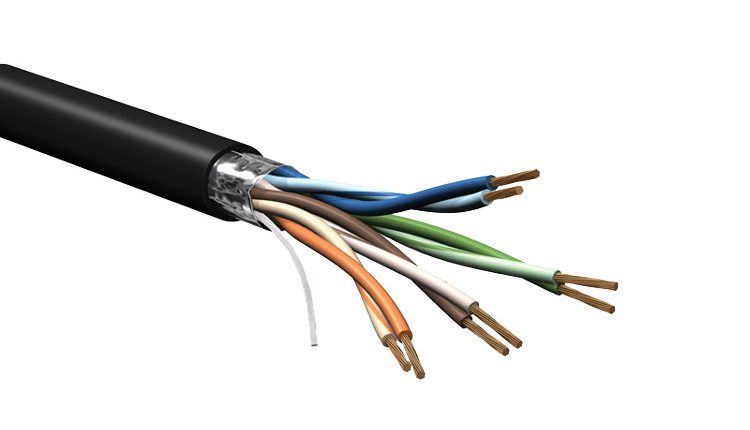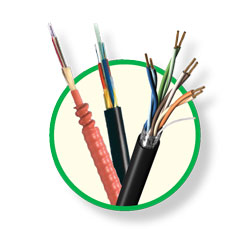Copper vs. Fiber: Which Cable Do You Need?
Author: Brian Shuman, senior product engineering project manager at Belden.
Engineers strive for maximum productivity with minimal downtime, but this goal is only attainable with the right network infrastructure. No matter the industry, if a team doesn’t have the right cabling system in place, network reliability and performance can be compromised, leading to very costly production downtime.
This is why investing in high-quality, rugged cabling is crucial – it can reduce both the direct and indirect costs of network failure and give you peace-of-mind that the system is working properly. There are a variety of cabling options out there, so how do teams know they have the right one to support their specific infrastructure and network requirements? Deciphering whether you need fiber or copper cabling is a great place to start.
Copper cables: The classic cabling mix
Copper cabling is the traditional option in industrial installations and is best suited for the majority of industrial data transmission needs. Copper cables come in a variety of forms, including Cat 5e, Cat 6 and Cat 6a twisted pair cables using any number of conductor types, insulations, shielding and jackets. Armoring is also available for extremely harsh environments.
Cat 5e cables are the most widely used copper cables today, but new installations favor the use of Cat 6 cables to meet required Gigabit speeds and increased headroom. Cat 6a cables are also an option for extreme future-proofing, minimizing the lack of bandwidth and headroom.
Teams must be careful when using copper cabling as it can stimulate potential failure points due to ingress from electrical noise, as also known as, electro-magnetic or radio frequency interference. In light of this risk, these cables can also limit bandwidth capacity and signal transmission at extended distances.
Fiber optic cables: The ultimate for future-proofing
Fiber optic cabling is ideal for industrial environments where high-speed, high-bandwidth data solutions are needed. Because fiber optic cables are typically superior in bandwidth, low attenuation and complete electrical noise immunity, more information can be carried across the network without interruption. They are also smaller and lighter than copper cables, extremely durable and intrinsically safe, with no risk of spark hazards.
Fiber optic Ethernet cables are available for both indoor and outdoor use, including situations where cables need to be buried underground. For example, fiber optic cabling is great for campus and in-building data backbones because they can anchor to an operation’s Ethernet, and also for point-to-point digital signal transmission.
Other important considerations for fiber optic cables include:
- Typical designs for fiber optic cables consist of multimode fibers in a loose tube configuration, commonly available in two to 72 fiber constructions.
- To handle gigabit Ethernet light sources and any expanded bandwidth requirements, some cables use a laser-optimized fiber.
- A basic Commercial Off-The-Shelf (COTS) fiber optic cable will likely not withstand industrial conditions given it is intended for enterprise applications. A fiber optic cable that is designed with ruggedized features to operate in industrial settings is needed.
- In particularly harsh environments, a chlorinated polyethylene (CPE) outer jacket will provide additional protection against chemicals or abrasion. An armor tape or aluminum/steel interlocked armoring may also be appropriate for extreme environments.
- For moisture protection, a water-blocking agent should be included in the cable construction.
- Look for fiber optic cabling with key industry ratings, including IEEE 1202-2006 for flame test and Underwriters Laboratories (UL) ratings for optical fiber, non-conductive riser (OFNR).
The four questions to ask for copper cables
Once teams understand whether they need copper or fiber cabling, it’s important to consider several physical components and surroundings of the cabling system. There are four questions engineers need to ask themselves when faced with a purchasing decision:
- Should my cable be shielded or unshielded?Unshielded products can be used in most environments, while shielded products are recommended for environments with high noise. A foil is typically used to protect the integrity of the signal and screen out any undesirable interference or noise. To provide extra durability and protection against noise, a foil/braid combination should be used.
- Should my conductors be solid or stranded? Solid conductors are appropriate for most installations, while stranded conductors provide extra flexibility for handling smaller spaces, such as robotic or continuous flex applications.
- Should I go with bonded or non-bonded cables? Bonded-pair cables provide resistance to the rigors of installation by utilizing a manufacturing technique that affixes the insulation of the cable pairs along their longitudinal axes so that no gaps can develop between the conductor pairs. A non-bonded pair cable construction can be susceptible to pair-gapping during installation, which results in impedance mismatches.
- What insulation material should my cable employ? It depends on the application scenario. Most industrial-grade Ethernet cables utilize a polyolefin insulation. For extreme temperatures, a Fluorinated Ethylene Ppropylene (FEP) insulation and jacket are recommended for extended operating temperatures of -70 to +150°C.
- For oil- and sunlight-resistant cables, polyvinyl chloride (PVC) jackets are typically used. If the cables are exposed to moisture, a water-blocking agent should be part of the cable’s construction, as well as inner and outer polyethylene (PE) jackets if the cable is buried.
- Gas resistance cables call for FEP jackets, while low-smoke zero-halogen (LSZH) jackets are available for environments where acidic smoke and flames are a key risk. This helps avoid smoke toxicity.
- For continuous flexing or robotic applications, cables with thermoplastic elastomer (TPE) inner and outer jackets are recommended due to the risks and complications involved with caterpillar track (c-track) installation.
Knowing whether you need copper or fiber optic cables and understanding the physical cabling components critical to the success of your application are the first steps in ensuring optimal performance in the face of demanding environments.
During the product selection process, it is very important to take the time to evaluate the marketplace and select top-quality, end-to-end cabling that can withstand tough environmental conditions and also fit with your specific application needs.
Taking this kind of total system approach will result in a more integrated system with all products seamlessly matched to deliver tremendous interoperability and consistently reliable performance every day.
- For more on comparing copper vs. fiber cabling, download this free white paper: ‘The Case for Specifying Industrial Ethernet Cable for Harsh Environments‘



Comments are closed, but trackbacks and pingbacks are open.